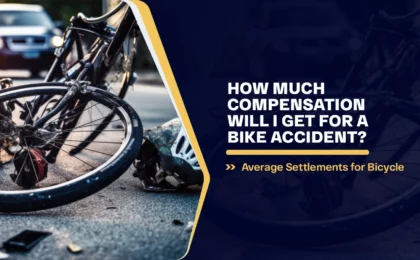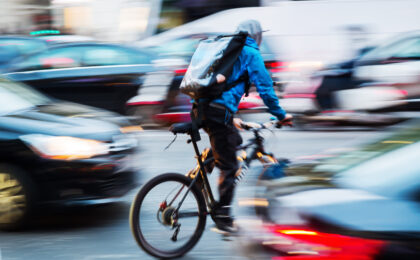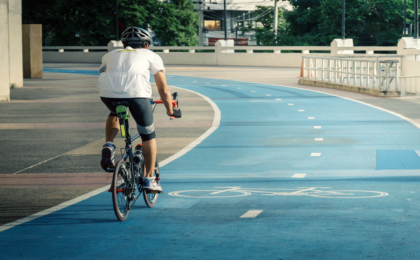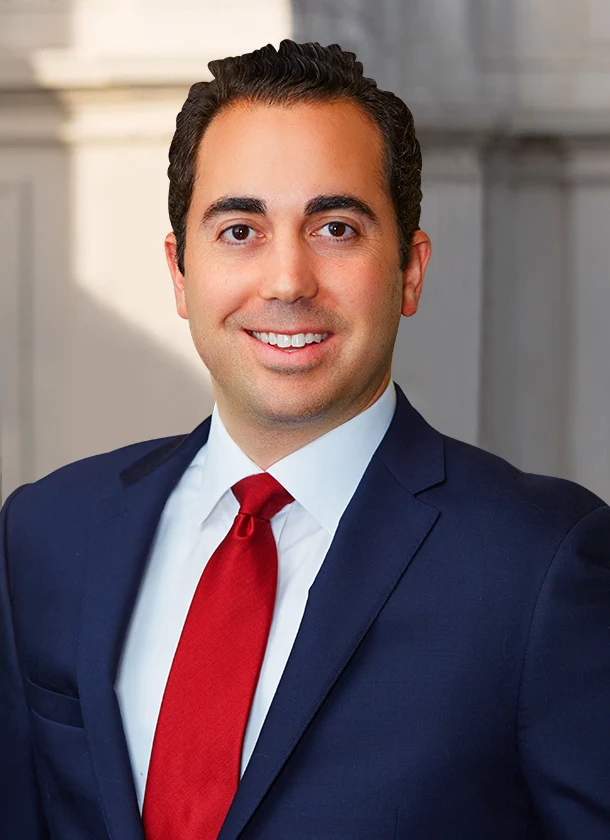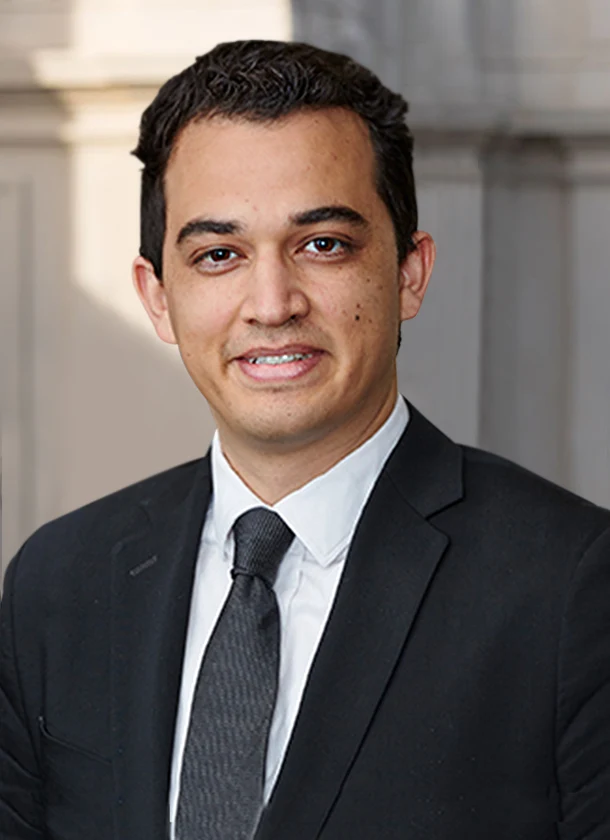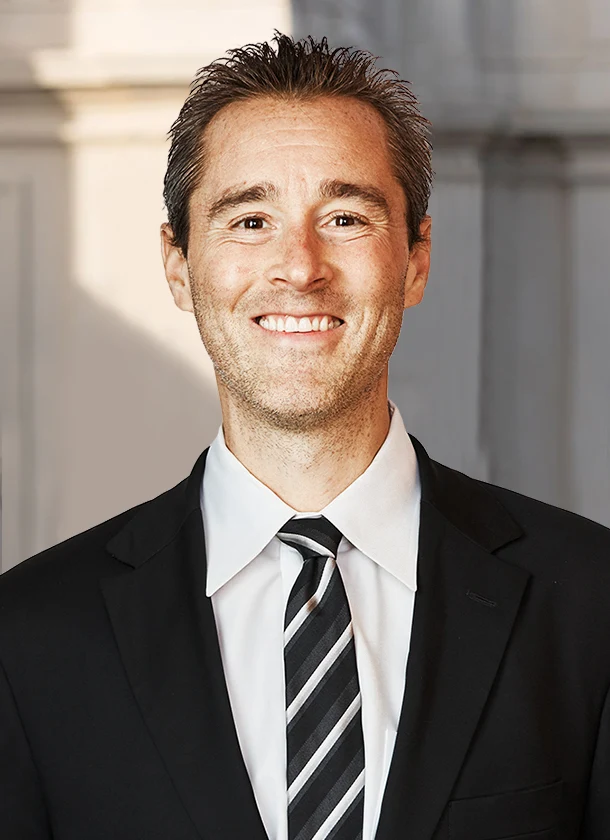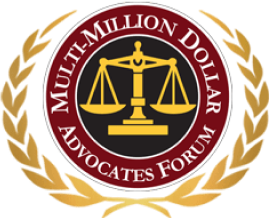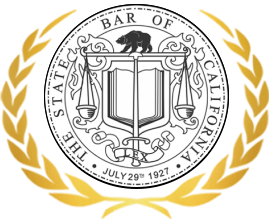In a bicycle-involved motor vehicle accident, a number of factors need to be taken into consideration to determine who is at fault and to what degree. One of the most important factors is whether either party acted negligently by breaching their duty of care under California law, which means they were responsible for preventing harm but failed to do so properly or timely enough. As a result of this negligence, an injury occurred on top of an otherwise avoidable accident.
 Are Cyclists Partly to Blame for Road Accidents?
Are Cyclists Partly to Blame for Road Accidents?
Just because the injuries sustained by the bicyclist are usually more substantial does not mean they aren’t at fault. With tons of factors to be mindful of, it’s easy to see why It takes a skilled bicycle accident attorney to determine if bicyclists are partly to blame for traffic accidents.
Determining fault after an accident is important and is different from liability. Strict liability in California law differs from fault liability in that an injurer can’t defeat liability by excuse or justification. Fault liability is the rule of thumb that victims are strictly liable for their losses unless the adverse party is at fault.
Strict (injurer) liability is the rule that injurers are strictly liable for the losses resulting from their misconduct unless the victim is at fault. So, strict liability and fault liability are mirrored images of one another.
Determining Who Is at Fault
Legal concepts like negligence, fault liability, and strict liability can be complicated, which is why it’s important to seek assistance from an experienced California bicycle accident lawyer who can help identify the fault in your particular bicycle versus car accident case. A good injury lawyer can examine the events of the accident and help determine which party was at fault and to what degree.
If only one person was at fault, then that person will be deemed liable for all losses resulting from the accident. For example, suppose a drunk driver hit a bicyclist while riding their bike in the established bike lane alongside a street. In that case, drivers will have to fully compensate the bicyclist in addition to facing some criminal charges for D.U.I.
Unfortunately, not all cases are this simple, and, in many accidents, both parties contributed to the accident to some degree. Under California’s comparative negligence laws, even if you were partially at fault for the accident, you may still have the right to recovery.
California is a Pure Comparative Negligence State
When determining liability in an accident, two legal theories are applied, namely contributory negligence and comparative negligence.
Under contributory negligence, if a cyclist is responsible for causing an accident in any way, they cannot recover any damages for their injuries in a personal injury lawsuit. This means that a cyclist who is only 1% at fault for causing an accident cannot successfully sue the driver, even if they were 99% at fault. This rule of law is only in place in the following areas:
- Alabama
- Maryland
- North Carolina
- Virginia, and
- Washington D.C.
Except for the ones listed above, all other states use a comparative negligence fault system; however, it’s applied differently from state to state.
Under pure comparative negligence, people involved in the accident can recover a percentage of the damages in direct proportion to the amount for which they were not at fault. Under modified comparative negligence, an individual cannot recover for damages sustained in an accident if their share of fault is 50% or more; however, that percentage varies from state to state.
California is a pure comparative negligence state. For example, if a cyclist gets into an accident with a car and is found to be 25% at fault for causing that accident, then a California jury would award the cyclist 75% of what they were suing to get. So, if the cyclist’s damages amounted to $300,000, they can recover $225,000, which is 75% of their total damages.
Duty of Care for California Drivers
Drivers in California have the legal responsibility to safely operate their vehicles to avoid collisions and prevent injuries to others on the road, including bicyclists and pedestrians. Drivers must stay coherent, be aware of their surroundings at all times, and follow all traffic laws.
When a driver does not behave responsibly and causes property damage or injury to others, that driver can be held liable for such negligence. Some of the most common forms of negligence that can lead drivers to collide with bicyclists include:
- Failure to obey traffic laws, signals, or right-of-way rules
- Driving under the influence of either drugs or alcohol
- Not looking before opening parked car doors on the street
- Distracted driving
- Falling asleep while driving
California Bicyclists Also Have a Duty of Care
Bicyclists in California also share the same duty of care as drivers, so while bicyclists are traveling on roads with motor vehicles, they must obey traffic signals, follow all traffic laws, and be aware of their surroundings. If bicyclists fail to follow these road rules and get into an accident, they can be held liable for the collision. Some common examples of bicyclist negligence include:
- Not using designated bike lanes or staying to the right side of the road if they are traveling slowly
- Biking under the influence of either drugs or alcohol
- Improper passing techniques
- Not following traffic signals
- Not yielding to pedestrians
- Not signaling on turns with their arms
- Making unsafe lane changes
The common thread behind most bicycle-involved car accidents is that all states have “side of the road” rules, which require bicyclists to ride on the far right side of the road or in a designated bike lane when they are not moving as fast as motor vehicle traffic. Most bicyclists follow these rules, but at the same time, bicyclists’ non-compliance to “side-of-the-road” rules often account for three common types of traffic accidents involving bicyclists, which are:
- being hit by a passing vehicle,
- hitting the open door of a parked vehicle, and
- being struck by a motor vehicle making a right turn.
‘Side-of-Road’ and Bike Lane Laws
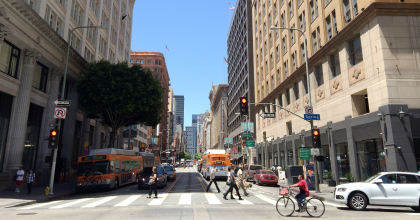
Fortunately for bicyclists, these “side-of-the-road” rules combine with other laws to provide additional protection for riders when they share the streets with motor vehicles.
If a cyclist is not riding as fast as the current flow of motor vehicle traffic, they must ride as far off to the right-hand side of the road as safely as possible. This rule differs on one-way streets, whereby the cyclist may ride to the far left instead. If a designated bike lane is provided, cyclists are required to use it.
In some instances, bicyclists are allowed to break the “side-of-the-road” rules, for example:
- if the lane is too narrow to share safely with passing cars,
- if the rider keeps pace with moving traffic,
- To make a left turn, or
- to avoid hazardous conditions.
In most circumstances, cyclists are required by law to ride near areas where vehicles are often parked, but the liability principles of negligence state that a person shouldn’t open a car door unless it is safe to do so. Any accident caused by opening a parked car door is almost always entirely the fault of the person driving the motor vehicle, not the cyclist.
An exception might exist whereby there was no motor vehicle traffic at all, which eliminates the requirement for the cyclist to stay to the far right side of the road (or left if it’s a one-way street). In this circumstance, the motorist who opened the car door might argue that the cyclist had ample opportunity to avoid the door and therefore was at least partly responsible for causing the accident.
Who is Most at Risk of Becoming a Bicycle Accident Victim?
To better understand some of the common causes of bicycle accidents in California, you need first to understand who is most at-risk of becoming a victim. A recent study by the NHTSA offers a detailed breakdown of bicycle accident victims and the circumstances that led to them being injured.
- The average age of victims in deadly bicycle accidents rose from 24 in 1988 to 32 in 1998 to 44 in 2013.
- Of those who bicyclists killed, 83% were male.
- The majority of bicycle deaths – 68%, happened in urban areas.
- A notable portion of deadly crashes – 22% – occurred in the three hours between 6 p.m. and 9 p.m.
- In nearly 1/3 of all bicycle crashes, either the driver or the cyclist had a B.A.C. (Blood Alcohol Concentration) 0.08% g/dL or higher.
How Are Bicyclists Injured in Accidents?
According to an NHTSA National Survey on Bicyclist and Pedestrian Attitudes and Behaviors, the six most common causes of injury to cyclists were:
- Directly being hit by a car (30%)
- Falling off their bike (17%)
- The roadway was in disrepair (13%)
- Rider error (13%)
- Crashed into a fixed object (7%)
- Dog (or another animal) ran out in front of them (4%)
When is the Bicyclist at Fault for an Accident?
Usually, when accidents involve a bike versus car collision, liability is generally allocated to the motor vehicle driver since cyclists lack the protection afforded to motor vehicle operators. The most common instances in which a cyclist can be at fault for a car accident are usually because:
- they were ignoring traffic signals,
- they weren’t riding in the designated bike lane,
- they were riding on the wrong side of the street or against the direction of vehicle traffic,
- or they were engaging in other forms of negligent behavior, like riding while under the influence of drugs or alcohol.
In cases like these, a cyclist would be deemed at fault for the accident and be prevented from pursuing monetary damages. Motor vehicle drivers are still held to a higher duty of care over cyclists for the simple fact that cyclists have a higher rate of suffering major injuries in an accident.
In California, when a cyclist is found to have acted negligently and contributed to an accident, they can be assigned comparative negligence. This means that a cyclist’s negligent actions partly contributed to the injuries they suffered. The fault is allocated between both parties to the degree they contributed to the accident. An amount of compensation may be awarded in direct proportion accordingly, but not to the full extent possible.
The age of the cyclist also matters a great deal. Under what is known as the “tender years” doctrine, children are incapable of contributory or comparative negligence, which almost automatically puts a motor vehicle driver at fault after a bike accident. In the eyes of the law, young children cannot be expected to exercise the normal duty of care on the road that is expected of a mature adult.
A well-versed bicycle accident lawyer will be able to determine whether your actions contributed a lesser degree of negligence or none at all. If you or a loved one is involved in any bicycle accident in California, speak to our trusted California accident lawyers to help you determine if you are eligible for restitution by calling (888) 488-1391 or contact us online.
 Preventing a Bicycle Accident
Preventing a Bicycle Accident
Even in states where the road laws are favorable to bicyclists, they should not forget that the laws of physics are indifferent and will apply to anyone, anywhere, and anytime. Since cars and trucks are enclosed, much larger, and heavier than bicycles, they provide a tremendous level of physical protection over the cyclist in the event of an accident.
Simply put, cyclists need to take preventative measures to avoid accidents far and above their motor vehicle driving counterparts. One highly effective preventative measure is not to imbibe alcohol before riding a bike. According to the NHTSA, 20% of cyclists who were killed in accidents in 2013 had a B.A.C. (Blood Alcohol Concentration) of 0.08% or higher.
Another very effective way for cyclists to avoid an accident is to do everything possible to be visible to motorists, especially at night, by wearing garments with reflectors, installing blinking lights on tires, and using proper lighting attachments to see the road and be seen by motorists.
Lastly, a bicyclist should be wearing protective gear, like a helmet, which may also be compulsory depending on where they live. Any cyclist involved in an accident in a state that mandates helmets for cyclists would have a much harder time getting compensation from the at-fault driver if they weren’t wearing one.
Additional tips that cyclists should follow to avoid accidents and mitigate their negative effects:
-
- Follow all traffic laws
- Remain sober, alert, and vigilant
- Wear protective gear, especially a helmet
- Secure adequate amounts of uninsured and underinsured motorist coverage in the event of a hit-and-run accident
Contact a Bicycle Accident Attorney
The complexity of existing and emerging bicycle and traffic laws can determine whether you are eligible to obtain damages from a successful personal injury claim mind-numbing. Suppose you or a loved one was injured in a bicycle accident. In that case, the insurance company shouldn’t sway you into accepting a lowball offer and risk not receiving just compensation. After any bicycle accident in California, speak to our reliable lawyers at Arash Law led by Arash Khorsandi, Esq. about your possible options. Call (888) 488-1391 or contact us online.

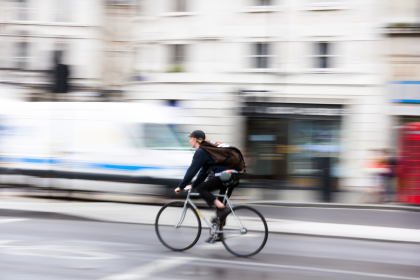 Are Cyclists Partly to Blame for Road Accidents?
Are Cyclists Partly to Blame for Road Accidents?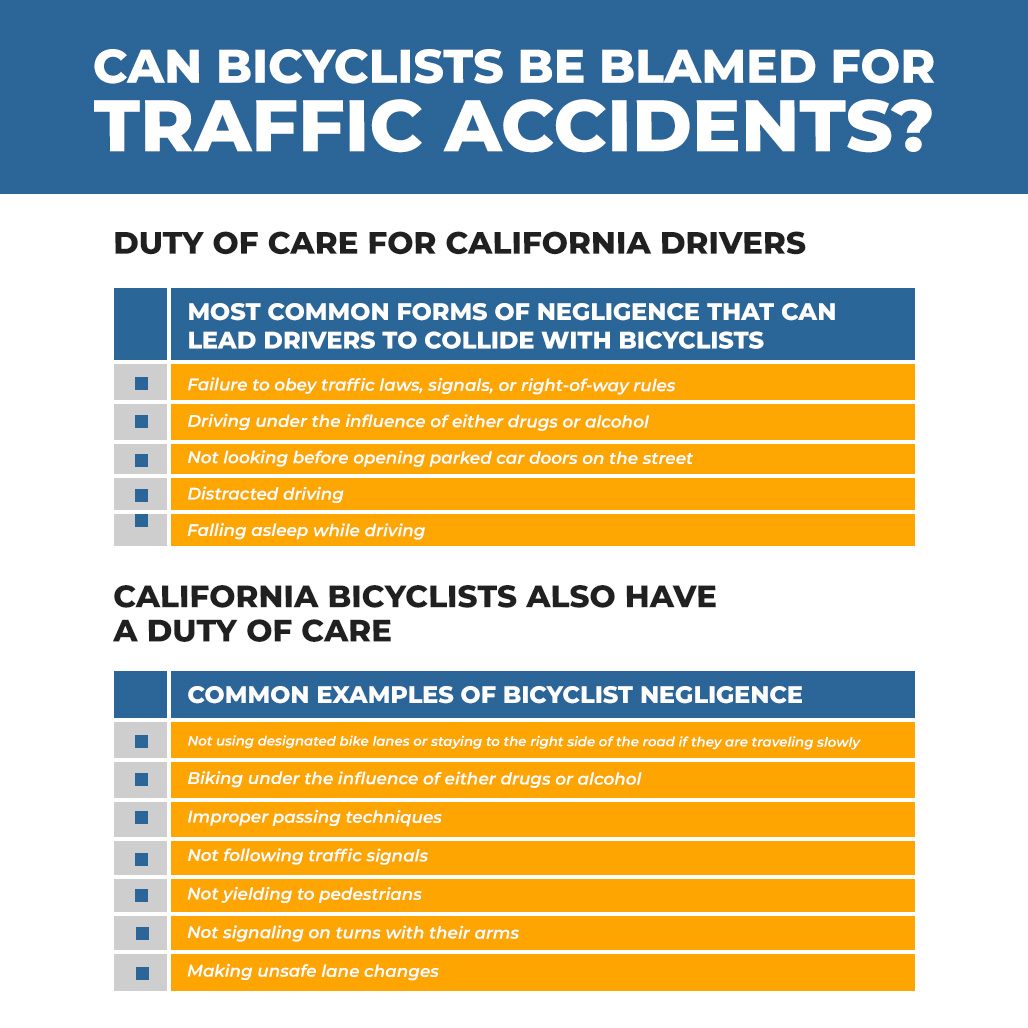
 Preventing a Bicycle Accident
Preventing a Bicycle Accident

